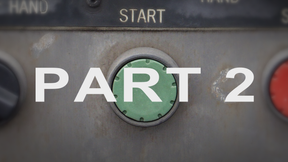BASIC TECHNIQUES OF COLD READING PART 2 OF 2
- willemvandeweert
- 4 jun 2015
- 3 minuten om te lezen

Linguistic strategies Well executed linguistic strategies give the client a feeling that the cold reader truly knows you. Three important basic strategies the cold reader can use are: Shotgunning, Barnum Statements and Rainbow Ruse.
Shotgunning is a technique in which the cold reader shoots a large amount of very general statements towards the client and then waits for the response (especially body language). If the client returns a positive response, the reader expands his statement. The great part about using this technique is that the client often voluntarily give out new information and eventually gives credit for that to the reader.
If the cold reader receives a negative response, it is easy to mitigate the statement and quickly move on to another statement. The statements used by the cold reader are often vague and the client is expected to give them the correct meaning. The idea is to pose questions and change them into firm statements after you get a positive response.
So-called ‘Barnum statements’ are named after the American showman P.T. Barnum. These Barnum statements (also known as Forer statements) are statements that seem particular individual but can actually be applied to everyone, or almost everyone. Research by B.R. Forer, who is a psychologist, has shown that such statements are easily accepted by the client if led to believe that they apply specifically to them. Examples of Barnum statements are:
“You know what you want in life, but sometimes it feels like you need some guidance”
“At a younger age you had some sort of an accident involving water”
“Sometimes you feel insecure, especially in new social situations”
“You have a strong need for approval and recognition by people that are important for you”
“You seem like a person that has told lies to save another person’s feelings”
“You don’t get stuff done easily, because you don’t like mediocrity”
Experienced cold readers have created their own extensive list of Barnum statements tailored to particularly every category of people (Section: Observation).
The third, and final linguistic strategy discussed in this section is the Rainbow Ruse. Statements consider in this category simply can’t be wrong, but still sound like a very convincing description of the clients personality. The key lies in simultaneously attributing two opposite personality traits to the client, leaving him/her unable to deny that statement. Although it is therefore one of the safest cold reading techniques out there, it doesn’t mean it is not very effective. Examples of rainbow ruse statements are:
“Most of the time you are a person cheerful and positive person, but there has been a time in the past when you were upset”
“I would say that you are mostly a little shy and quiet, but when the mood strikes you, you can easily become the center of attention”
Important when using or creating rainbow ruse statements is that you concentrate on the positive personality trait, while briefly mentioning its opposite. Most clients will fully agree with statements like these, without realizing how meaningless they really are.
Wrapping up
Now the basics about cold reading, and some of its tools have been discussed it is important to understand what is important for the cold reading him or herself in order to be successful. In the first section of this post we discussed the ability to observe and the ability to read non-verbal behavior are two key features that every successful cold reader has. Furthermore, it is extremely important that your verbal skills are fluency and have the capacity for quick thinking. These are skills that can be developed by studying a lot and above all PRACTICE!
To finish this article I would like to mention a final tool which is repeating information given by the client. It is very important that every bit of information given by the client is memorized. This will the cold reader not only allow to make further deductions with the information given, but also being able to exploit the fact that clients often forget that they have said certain things. This enables the cold reader to repeat information given by the client, at some later stage, as if this is information being received psychically.
Now that you are familiar with the basic cold reading techniques, you should be able to recognize these techniques put into practice in this video:
LEARN MORE CLICK HERE





















Opmerkingen